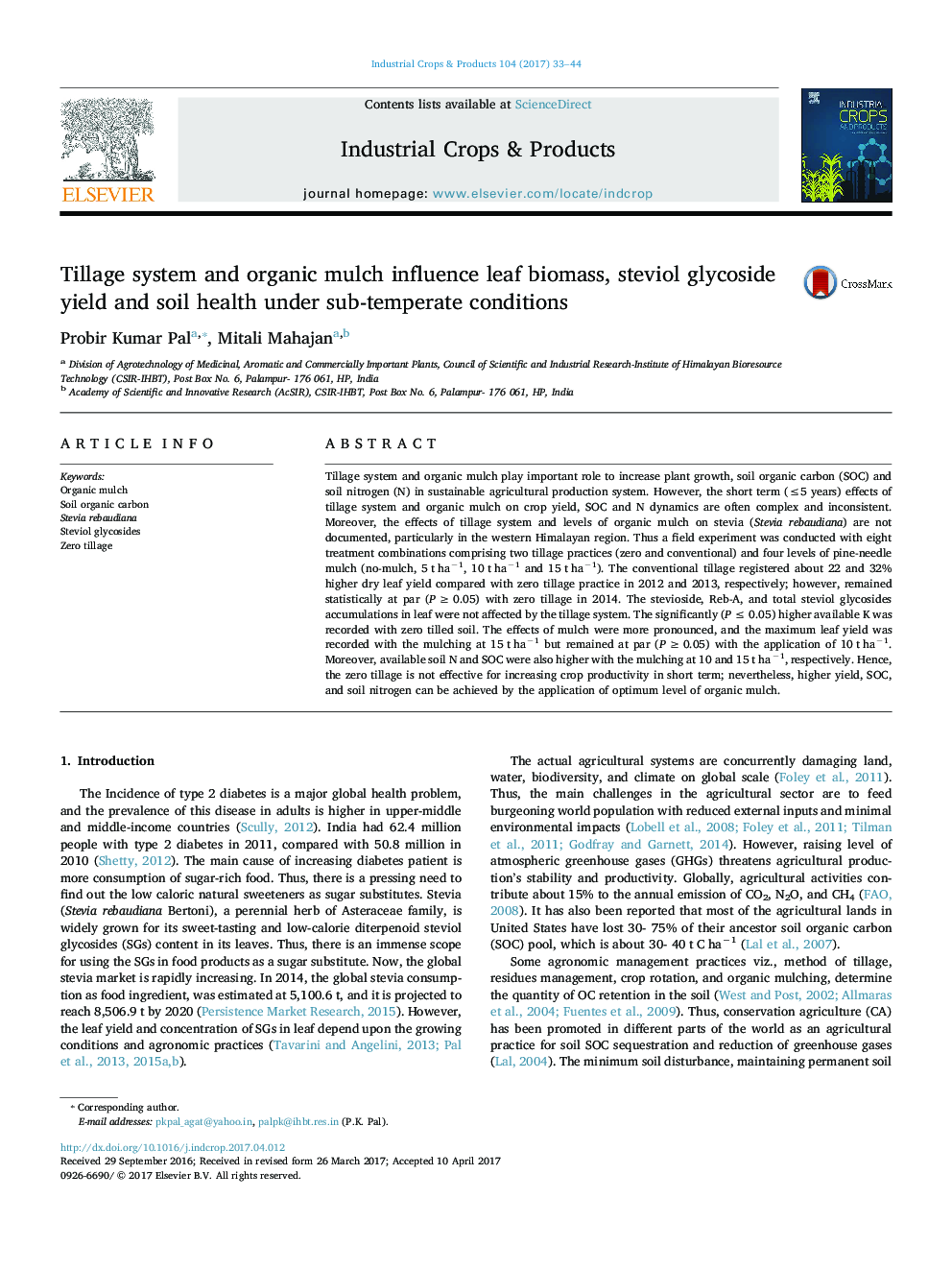| Article ID | Journal | Published Year | Pages | File Type |
|---|---|---|---|---|
| 5761778 | Industrial Crops and Products | 2017 | 12 Pages |
Abstract
Tillage system and organic mulch play important role to increase plant growth, soil organic carbon (SOC) and soil nitrogen (N) in sustainable agricultural production system. However, the short term (â¤5 years) effects of tillage system and organic mulch on crop yield, SOC and N dynamics are often complex and inconsistent. Moreover, the effects of tillage system and levels of organic mulch on stevia (Stevia rebaudiana) are not documented, particularly in the western Himalayan region. Thus a field experiment was conducted with eight treatment combinations comprising two tillage practices (zero and conventional) and four levels of pine-needle mulch (no-mulch, 5 t haâ1, 10 t haâ1 and 15 t haâ1). The conventional tillage registered about 22 and 32% higher dry leaf yield compared with zero tillage practice in 2012 and 2013, respectively; however, remained statistically at par (P â¥Â 0.05) with zero tillage in 2014. The stevioside, Reb-A, and total steviol glycosides accumulations in leaf were not affected by the tillage system. The significantly (P â¤Â 0.05) higher available K was recorded with zero tilled soil. The effects of mulch were more pronounced, and the maximum leaf yield was recorded with the mulching at 15 t haâ1 but remained at par (P â¥Â 0.05) with the application of 10 t haâ1. Moreover, available soil N and SOC were also higher with the mulching at 10 and 15 t haâ1, respectively. Hence, the zero tillage is not effective for increasing crop productivity in short term; nevertheless, higher yield, SOC, and soil nitrogen can be achieved by the application of optimum level of organic mulch.
Related Topics
Life Sciences
Agricultural and Biological Sciences
Agronomy and Crop Science
Authors
Probir Kumar Pal, Mitali Mahajan,
